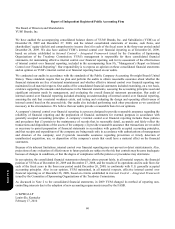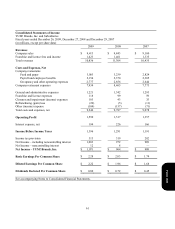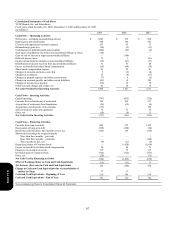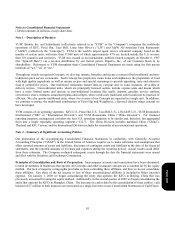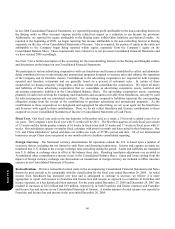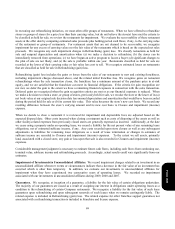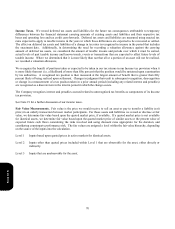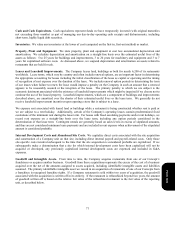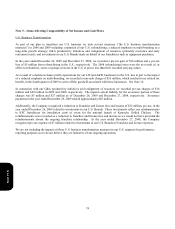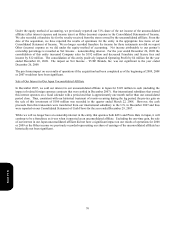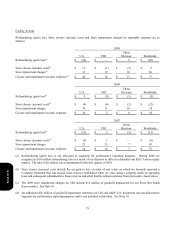Pizza Hut 2009 Annual Report Download - page 161
Download and view the complete annual report
Please find page 161 of the 2009 Pizza Hut annual report below. You can navigate through the pages in the report by either clicking on the pages listed below, or by using the keyword search tool below to find specific information within the annual report.
70
Income Taxes. We record deferred tax assets and liabilities for the future tax consequences attributable to temporary
differences between the financial statement carrying amounts of existing assets and liabilities and their respective tax
bases and operating loss and tax credit carryforwards. Deferred tax assets and liabilities are measured using enacted tax
rates expected to apply to taxable income in the years in which those differences are expected to be recovered or settled.
The effect on deferred tax assets and liabilities of a change in tax rates is recognized in income in the period that includes
the enactment date. Additionally, in determining the need for recording a valuation allowance against the carrying
amount of deferred tax assets, we considered the amount of taxable income and periods over which it must be earned,
actual levels of past taxable income and known trends, events or transactions that are expected to affect future levels of
taxable income. Where we determined that it is more likely than not that all or a portion of an asset will not be realized,
we recorded a valuation allowance.
We recognize the benefit of positions taken or expected to be taken in our tax returns in our Income tax provision when it
is more likely than not (i.e. a likelihood of more than fifty percent) that the position would be sustained upon examination
by tax authorities. A recognized tax position is then measured at the largest amount of benefit that is greater than fifty
percent likely of being realized upon settlement. Changes in judgment that result in subsequent recognition, derecognition
or change in a measurement of a tax position taken in a prior annual period (including any related interest and penalties)
are recognized as a discrete item in the interim period in which the change occurs.
The Company recognizes interest and penalties accrued related to unrecognized tax benefits as components of its Income
tax provision.
See Note 19 for a further discussion of our income taxes.
Fair Value Measurements. Fair value is the price we would receive to sell an asset or pay to transfer a liability (exit
price) in an orderly transaction between market participants. For those assets and liabilities we record or disclose at fair
value, we determine fair value based upon the quoted market price, if available. If a quoted market price is not available
for identical assets, we determine fair value based upon the quoted market price of similar assets or the present value of
expected future cash flows considering the risks involved and using discount rates appropriate for the duration, and
considering counterparty performance risk. The fair values are assigned a level within the fair value hierarchy, depending
on the source of the inputs into the calculation.
Level 1 Inputs based upon quoted prices in active markets for identical assets.
Level 2 Inputs other than quoted prices included within Level 1 that are observable for the asset, either directly o
r
indirectly.
Level 3 Inputs that are unobservable for the asset.
Form 10-K


